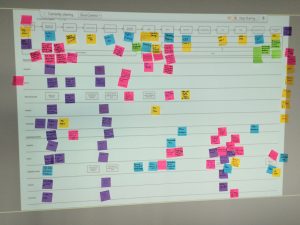A broken process is like a leaky boat, time wasting activity starts pouring in, and pretty soon you’re underwater.
But there’s nothing like a sheet of butcher’s paper to lift the hatch, inspect the bilges and find the holes.
The brown paper workshop is usually the second step we go through with clients to help them speed things up and save time.
The first step is to decide where we need to focus. An informal meeting over coffee is a chance to talk about the business and what makes it tick, and find out from you which processes are holding you back, and hear about the leaks you can see but not quite stop.
Once we know where to look, we unfurl the big roll of brown paper and have a short workshop with the people involved in the process to get to the bottom of what’s happening.
This sounds like a big job, but we know how to get it done quickly and get the most out of everyone’s time.
What we end up with is a beautiful brown paper view of the process and details for each step:
– Who supplies the inputs that are used in the activity?
– What are the inputs they need?
– What activity is actually performed?
– What outputs are generated?
– Who are the outputs used by?
It’s also a chance to find out what systems are being used and how information flows between the steps.
Finally, we want to know where the team are getting frustrated, and where they feel they could be more productive. We’re of the firm view that people generally do their best to make things work, but a bad process or system will always get them in the end.
The final output is a simple list of recommendations that you can take away – or we can help you make it happen.


